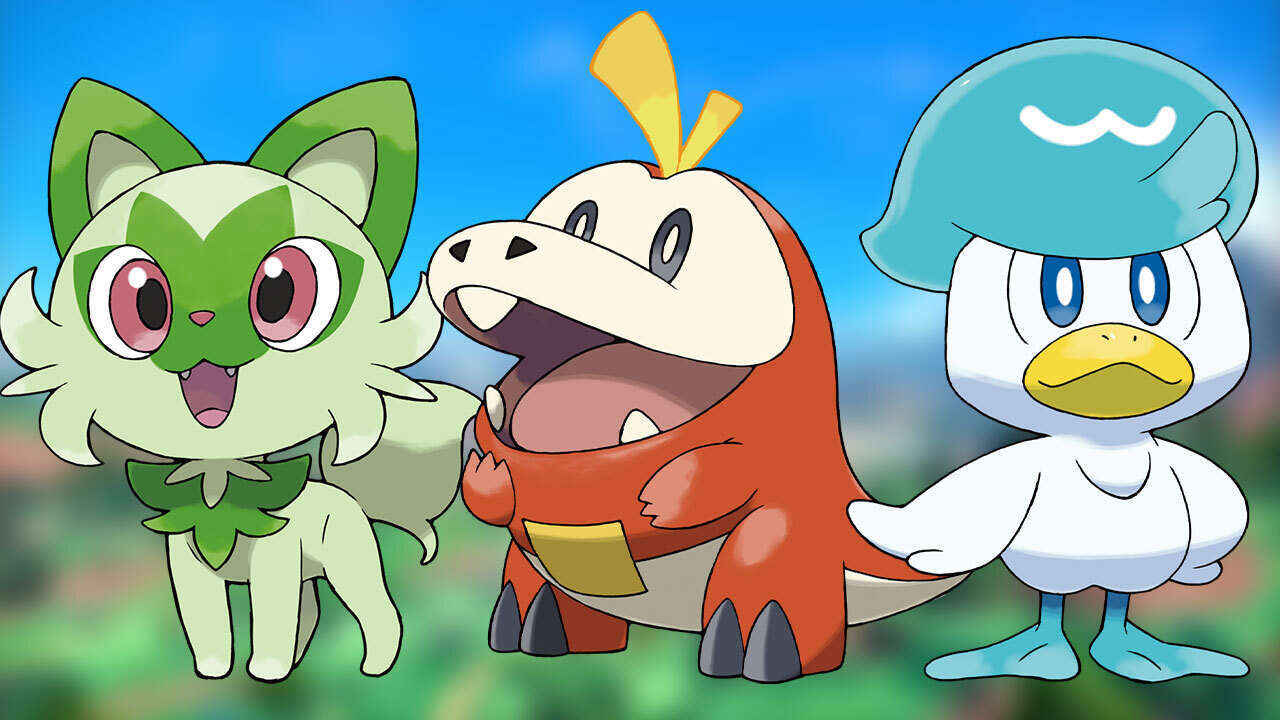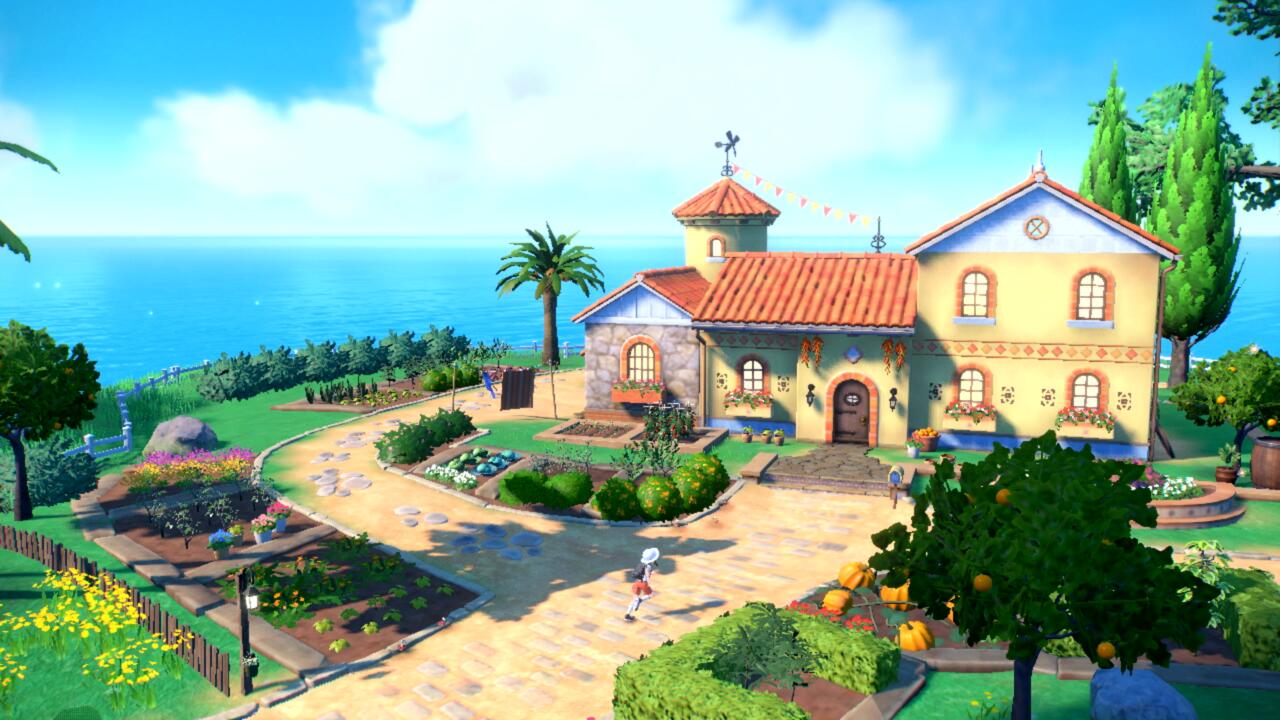Pokemon Scarlet And Violet: Everything We Know
Pokemon Scarlet and Violet mark the Gen-9 of Pokemon games, and they're coming very soon. Here's everything we know.
Pokemon Scarlet and Violet, brand-new Gen-9 entries in the ongoing Pokemon franchise, are coming very soon. The latest entry in the Pokemon franchise promises the first open world in the main franchise, with three unique questlines to pursue as you explore the Paldea region. The new structure of the game promises some big changes to the franchise as a whole, along with the usual new additions you've come to expect from a Pokemon game, like a bunch of new monsters to collect.
Ahead of the launch of Pokemon Scarlet and Violet, we've gotten a lot of new information and insight about just how this new open-world Pokemon approach will work. In preparation for the release, here's everything we know.
Release date
As part of a new gameplay trailer shared in June, it was revealed that Pokemon Scarlet and Violet will release on November 18, 2022, exclusively for Nintendo Switch. Preorders for Scarlet and Violet are now live. Nintendo is also producing a special-edition Nintendo Switch that features the game's two legendaries, Koraidon and Miraidon, on the dock, along with the school emblems on the Joy-Con controllers. For more details, check out our Pokemon Scarlet and Violet preorder guide.
New region
Every new mainline Pokemon game features a new region, and often these are based loosely on real-world locations. The very first Pokemon game, for example, took place in the Kanto region, which was modeled after Nintendo and The Pokemon Company's home nation of Japan. Other regions have been inspired by France (Kalos), Hawaii (Alola), and most recently, the United Kingdom (Galar).
The new region in Pokemon Scarlet and Violet is Paldea, based loosely on Spain and the surrounding regions. That cultural influence shows in several Pokemon names, as well as elements of the new cooking mechanics. Based on released artwork, the full map appears to be very roughly the shape of Spain.
New and returning Pokemon and starters
In the first trailer, we saw only three Pokemon: the starters that players will choose from at the beginning of their adventure. As usual, these fall into the core elemental types: Grass, Fire, and Water. This has been the case since the very first Pokemon game, so it's not surprising to see Game Freak stick to tradition.

The three starters are Sprigatito, the Grass cat; Fuecoco, the Fire croc; and Quaxly, the Water duckling. We've only seen their starter forms, so we don't know how they'll evolve. Some of the time, as Pokemon evolve, they gain new types on top of their original elemental attributes.
Subsequent trailers have shown many more Pokemon, including returning favorites like Pikachu and Psyduck, and even a Hisuian variant of Zoroark that was first introduced in Pokemon Legends: Arceus. We've also seen lots of new additions like the the cliff-climbing crab Klawf, the Mega Man-looking bipedal Amarouge, and the adorable Fidough.
At this point there are way too many Pokemon to list here, so for more info, be sure to check out our Every Confirmed Pokemon For Pokemon Scarlet And Violet So Far gallery.
The three quests
Traditionally, Pokemon games have told a single story campaign that was fairly linear. With the new open-world approach in Pokemon Scarlet and Violet, that structure has changed as well. Instead of a single linear story, you can pursue one of three major questlines: Victory Road, the Path of Legends, and Starfall Street.
Victory Road is the most recognizable and classic quest in Pokemon, as you vie to be the very best (like no one ever was) by conquering regional gym leaders and, presumably, the Elite Four. This time you can pick which order to challenge the gym leaders, though, which means the difficulty balancing may be very different this time. In the one gym challenge we've seen, you didn't even battle a series of NPCs in the gym--instead, you play a brief hide-and-seek game with some Pokemon and then challenge the gym leader 1-on-1. This could mean that gyms are more based around themed activities, rather than battle gauntlets.
The Path of Legends revolves around researching gargantuan Pokemon. There are a set number of these massive Pokemon roaming about, and you'll need to follow the clues to track them down and beat them in battle for research purposes. This may be the path we know the least about, because even in our hands-on preview we were restricted from seeing the conclusion of the battle against a gigantic Klawf.
Finally, Starfall Street is the new way of challenging the new antagonist, Team Star. These encounters are no longer woven in and out of the story. Instead, Team Star has set up outposts of their own and you'll need to enter a special area to challenge them. In our time with the game, the one Team Star challenge was to take down a certain number of enemy Pokemon within a time limit, which then led to battling the leader of that Team Star outpost.
It remains to be seen how these three paths will fit together into the whole experience.
New features
One major new feature promised by the promotional material so far is that this will take place in an open-world environment. According to the official site:
"Various towns blend seamlessly into the wilderness with no borders. You’ll be able to see the Pokémon of this region in the skies, in the seas, in the forests, on the streets–all over! You’ll be able to experience the true joy of the Pokémon series--battling against wild Pokémon in order to catch them--now in an open-world game that players of any age can enjoy."
On that note, Game Freak has also promised that you can explore the world with up to four players. This would make a true open-world multiplayer game, as opposed to Sword and Shield, which simply had multiplayer raid battles on top of the traditional battling and trading features.
Finally, the second trailer debuted two different professors, Professor Sada and Turo. Those two will be exclusive to Scarlet and Violet, respectively, marking the first time the professor characters in a Pokemon game are version-exclusive. That may also mean we'll see the story deviate between the two versions. There's some indication in the visual design of both the legendaries and professors that the two versions symbolize a nature vs. technology conflict. As usual, you'll also be running into a friendly rival, this time a girl named Nemona.
The game also features a cooking minigame, similar to Arceus, which lets you either buy finished dishes or cook your own. Then you can eat the foods either in town or out in a field by setting up a picnic. These foods will give you passive buffs, such as boosting your chances of finding a particular Pokemon type, for example. As you explore the game and put together recipes you'll find some foods that can help you catch specific Pokemon that you're hunting for.
Scarlet and Violet also introduce a new Pokemon power-up, called Terastal forms. These give your Pokemon a crystalline look and enhance your moves, making them more powerful. Better yet, you can find rare Terastal Pokemon that can actually equip types outside of their standard type classification. This will help you get a drop on opponents who weren't expecting a type matchup based on your Pokemon themselves, and should shake up the competitive meta-game. It seems that these special Terastal Pokemon will mostly be obtainable through special events and raid battles, but any Pokemon species has the potential to become a Terastal form.
How the open world works
To describe how the open world works in Pokemon Scarlet and Violet, let's take a moment to recap what the difference is between the open structures of Pokemon Sword/Shield and Pokemon Legends: Arceus.
In Pokemon Sword and Shield, there were open areas, most notably the new "Wild Areas" where Pokemon could be seen roaming freely. But there were still hard loads between certain areas, and battles were their own distinct battle screen that loaded in separately from the exploration.
In Pokemon Legends: Arceus, there were several open-world areas that would be loaded in individually as you chose to explore a region. But within those regions there was an enormous amount of flexibility. You could toss Poke Balls directly at a Pokemon to catch them without doing battle at all, and when you did get into battle, you could still move around freely.

So which version does Pokemon Scarlet and Violet resemble most? Our hands-on preview shed a lot of light on this topic, and the answer is that it takes cues from both games but is more recognizably taking parts of Arceus.
In the Scarlet and Violet open world, you can see wild Pokemon wandering about just like in Arceus and the Wild areas of Sword and Shield. You can't simply catch a Pokemon by tossing a ball in the open world, but you can initiate a battle that way for a bonus. In a more marked change from the norm, you can even skip battles altogether by having your own Pokemon roam the landscape alongside you, passively taking care of enemy Pokmeon and racking up a reduced amount of experience. In fact, in the Team Star battle area mentioned above, we were able to have our Pokemon passively complete the timed element of the challenge.
The new legendary Pokemon appear to serve as mounts for navigating the open world, letting you glide, climb walls, and run faster. Also as a result of this open-world approach, NPCs will no longer stop you in your tracks to initiate a battle. Instead, you'll get a visual indicator that they're interested in a trainer battle, and you can go up to them and accept the challenge if you'd like. Since the entire world is now essentially made up of a Wild Area, towns are more of a safe haven from wild Pokemon.
Got a news tip or want to contact us directly? Email news@gamespot.com
























Join the conversation